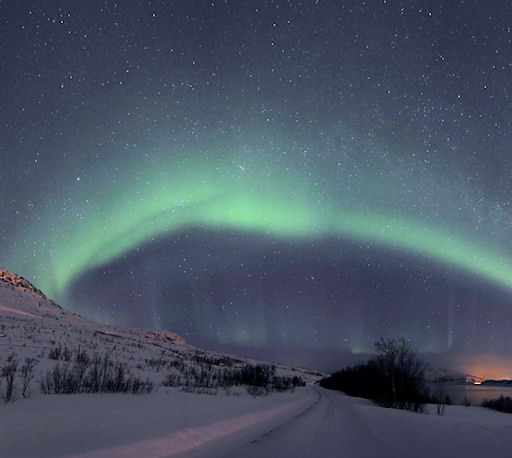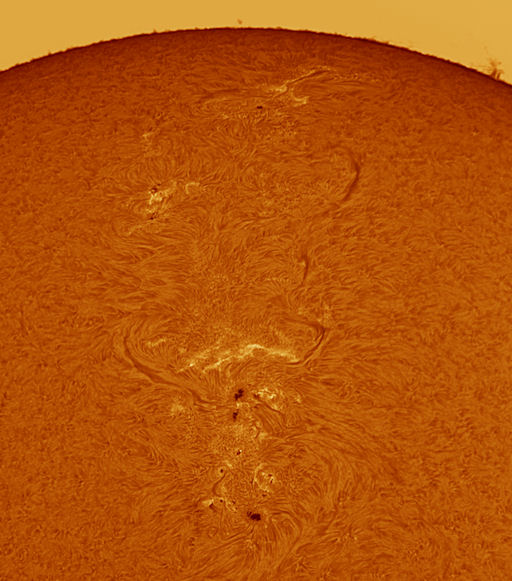Turn your cell phone into a field-tested satellite tracker. Works for Android and iPhone. | | |
BLAST MISSES EARTH: A magnetic filament on the sun's northeastern limb erupted on March 28th, hurling part of itself into space: SDO image. The debris is expected to miss Earth.
NORTHERN LIGHTS, UNPROVOKED: Sometimes auroras just happen. Last night in Norway, a spectacular band of Northern Lights arced across the sky unprovoked by any obvious gusts of solar wind. Fredrik Broms sends this picture from Kvaløya:

"These very beautiful and gentle auroras painted the sky and snowy landscape in green," says Broms. "With the auroras forming a band from east to west and the Milky Way stretching over the sky in the same direction now during spring, I beheld a double band of celestial wonders. Later in the night, pulsating auroras appeared over most of the sky, most prominent right above my head."
The density of the solar wind blowing past Earth is slowly increasing today. This could provide some genuine provocation for even better displays tonight. Arctic sky watchers should be alert for auroras.
March 2011 Aurora Photo Gallery
[previous Marches: 2010, 2009, 2008, 2007, 2006, 2005, 2004, 2003, 2002]
SOLAR RADIO STORM: Did you know sunspots can make noise? Consider the following: "Over the past few days, I have been recording a sustained solar radio storm at 180 MHz," reports amateur radio astronomer Thomas Ashcraft of New Mexico. "It consists of Type I radio bursts and sounds like ocean surf. Here is an audio sample from March 27th at 1930 UT. The sun seems to be entering a new phase of dynamism."
Radio emissions like these are caused by plasma instabilities in the sun's atmosphere above sunspots. With the sun becoming 'radio-active,' it's no coincidence that sunspots are emerging in abundance. Leading the way is behemoth active region AR1176, shown here in a photo taken by Larry Alvarez of Flower Mound, Texas:

AR1176, the multi-cored ensemble at the bottom of the image, is dragging a pair of long magnetic filaments behind as it cuts aross the solar disk. Two more sunspots are visible in the active region's wake. The entire starscape spans more than 500,000 km from top to bottom--truly impressive. "I call this picture Solar Rip," says Alvarez, "because it looks like a rip in the stellar surface."
With so much happening on the sun, now is a good time to consider purchasing a solar telescope. Space Weather Store offers an out of the box system that requires minimal setup or previous experience.
more images: from JP Brahic of Uzes, France; from Jim Fakatselis of Huntington, NY; from Mike Borman of Evansville, Indiana; from Rogerio Marcon of Campinas SP Brasil; from N. Pommeville and J. Stetson of South Portland, Maine; from Dave Gradwell of Birr Ireland; from Raymond Lalonde of Cornwall, Ont. Canada;

